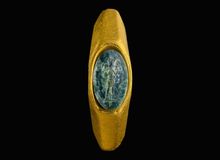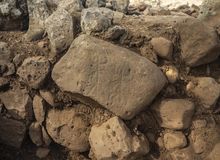


The discovery was made during the recovery of a shipwreck off the coast of Caesarea, Israel.

It was discovered in Israel, near the site of the Temple in the time of Jesus. Experts said the engraving had never been found on other objects until now.

The “extremely rare” inscription from around 1,100 BCE bears the name Jerubbaal, which in the Book of Judges is an alternative name for Gideon.

Archaeologists link the “rare and exciting find” to the Geshurites, one of the communities that had diplomatic relations with King David.

“The palace was built during the reign of King Hezekiah [...] The level of workmanship is the best seen to date, and the degree of preservation is rare”, archaeologists say.

The seal impressions found in Jerusalem, “add much information” about the time when the Jews returned from Babylonian exile.

The 2,600-year-old seal bears the inscription “(belonging) to Nathan-Melech”, a name that appears in II Kings 23:11.

The findings show the affluence of Jerusalem, and are proof of the city's fall described in the Bible.

They also found evidences of the battle between the Roman forces and the Jewish rebels, which resulted in the destruction of Jerusalem in AD 70.

The cache of nine bronze coins may have been stashed fleeing Christians en route to Jerusalem as Persians invaded the land in 614 CE.

Las opiniones vertidas por nuestros colaboradores se realizan a nivel personal, pudiendo coincidir o no con la postura de la dirección de Protestante Digital.